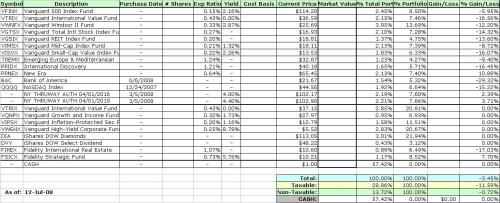Until a few weeks ago I thought yes, it is the best time to refinance your mortgage. Mortgage interest rates are at an all time low. We’re talking around 5% for a 30 year fixed conforming loan (meaning the loan is less than 417K) and a little over 5% for high-cost 30 year fixed conforming loan in certain areas (less than 729K). Click here for the actual amounts. Incredible, right?
Those numbers looks fantastic, but a hidden fact remains: the bank will only finance you around 80% of your home’s appraised value. That means for everyone who’s home is now worth less than the purchase price can get caught having to put in more money. For example, you bought your home 3 years ago for $500,000 with a $400,000 mortgage at 6.5% (80% financing: $100,000 from you and a loan of $400,000). You now want to refinance at the wonderful available rate of 5% which would bring down your monthly payments considerably. Everything moves along smoothly until the appraisal comes back; your home has dropped 20% in value to $400,000 and at 80% financing the bank will only loan you $320,000. That means you need to put another $80,000 in if you want to refinance!
While the above example doesn’t account for principal payments over the three years, it illustrates what a lot of people are facing now: to get the historically low mortgage interest rates they will need to put more cash into their home.
Is it worth it? I believe so for the following reasons based on the above example:
Assumption: You have the available investment cash for the life of the loan. If you don’t have the non-emergency money available then stop here. Remember, you won’t be able to take the money back until you sell or refinance again at a high loan amount.
- You’re not just getting a new mortgage interest rate, but also lowering your loan amount. You’re essentially investing in your home. Given current bank savings account interest rates (the best being around 1.5%) it might be worth putting this money into your home. Now if bank interest rates go up considerably you might miss out. However, that goes into the next point…
- While bank interest rates might go up, so might the mortgage interest rates. This may be a rare opportunity to grab an incredible mortgage interest rate. If you’re planning on spending many years in your home locking in a low rate might be a good idea.
- Comparing investing in stocks vs. your home is a tough one. One important point is that the money you save per year with a lower mortgage interest rate (and lowering your loan amount) is guaranteed. Unlike the stock market it isn’t volatile.
I suggest doing a thorough comparison of your current monthly payments verse refinanced payments. The amount saved is the amount (%) you’re receiving on the invested cash. You can use a mortgage calculator to help compute these numbers.
Here is a rough calculation for the above example:
$400,000 loan – 30 year fixed at 6.5%: $2,528 monthly, $30,336 yearly
$320,000 loan – 30 year fixed at 5%: $1,717 monthly, $20,604 yearly
Based upon the yearly saving of $9,732, the $80,000 put into the refinance can be considered as receiving an interest rate of 12.1%. Not too bad compared to the 1.5% you can get at HSBCDirect.com.*
* A fully accurate example will have to consider the tax deduction on the interest portion of the mortgage payment and the taxes on the bank savings account. This will most likely lower the 12.1% by several points.
 Every year I check out the latest editions of Microsoft Money Plus and Quicken to see what are the new features and if I have any inkling to buy (not yet so far). The description of Quicken 2009 on Amazon lists the standard new features…more banks, better interfaces, blah, blah. Same old stuff theve had fr the past 5 years. I also noted that there doesn’t seem to be a Quicken 2009 Mac version. Where’s the Mac love?
Every year I check out the latest editions of Microsoft Money Plus and Quicken to see what are the new features and if I have any inkling to buy (not yet so far). The description of Quicken 2009 on Amazon lists the standard new features…more banks, better interfaces, blah, blah. Same old stuff theve had fr the past 5 years. I also noted that there doesn’t seem to be a Quicken 2009 Mac version. Where’s the Mac love?
 I recently read in the Wall Street Journal an
I recently read in the Wall Street Journal an 
